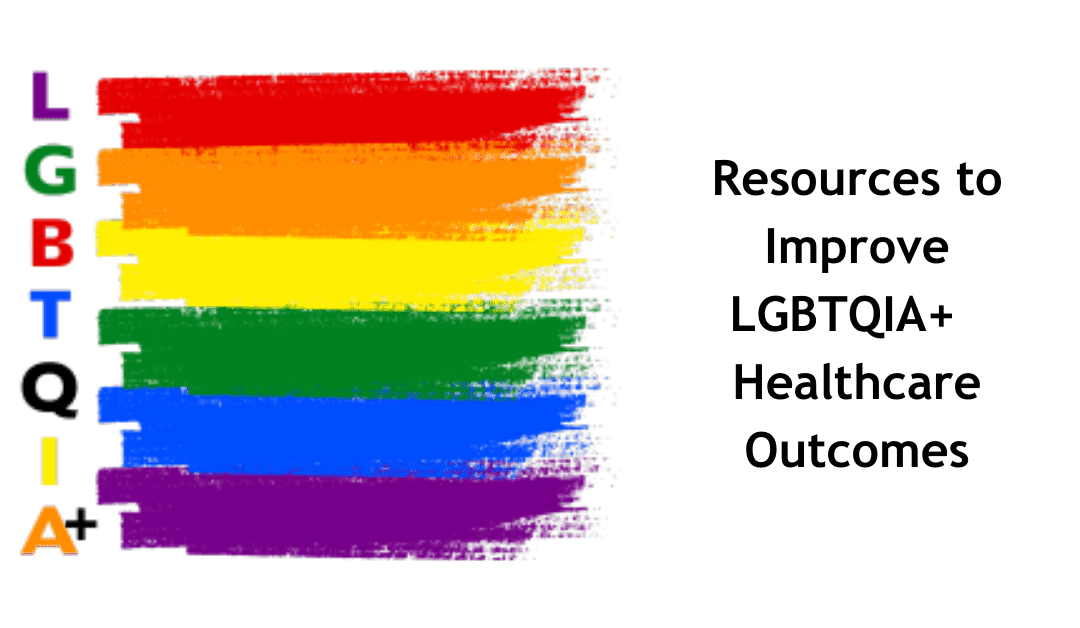
by Bag It Team | Jun 12, 2023 | Educational Articles
June is Pride Month, an opportunity to celebrate and recognize the impact of the lesbian, gay, bisexual, transgender and queer individuals in our communities. However, the LGBTQIA+ community continues to have many struggles, including receiving good healthcare, largely due to past experiences or fear of discrimination of providers.
National Institute on Minority Health and Health Disparities (NIMHD) reports that stigmatization, hate-violence, and discrimination are still major barriers to the health and well-being of LGBTQIA+ individuals.
Additional challenges for LGBTQIA+ individuals include a higher risk of certain conditions, less access to health care and worse health outcomes. These are partially due to a lack of data, lack of knowledge from healthcare providers for these patients and issues related to social determinants of health. According to the National LGBT Cancer Network a cluster of lifestyle factors including drinking alcohol, smoking, being an unhealthy weight, HIV and HPV infections, and not going in for screenings are all risk factors found to increase cancer incidence and late-stage diagnosis in this population.
Here are a few additional facts:
- 1 million. The number of LGBTQ+ cancer survivors in the country today (National LGBT Cancer Network, 2020)
- 7 types of cancer disproportionately impact LGBTQ+ people, including anal cancer, breast cancer, cervical cancer, colorectal cancer, lung cancer, prostate cancer, and uterine cancer (Cancer.net)
- Transgender individuals are significantly less likely to be screened for breast and colorectal cancer compared with cisgender individuals (AACR, 2021)
The American Cancer Society estimates approximately 152,000 new cancer cases and
more than 48,785 cancer deaths among the LGBTQ+ people this year.
LGBTIQIA+ Community Resources
Part of Bag It Cancer’s mission is to provide respected resources to everyone concerned about their health or facing a cancer diagnosis. Here are a few of the sources we list on our Populations Groups page in our Cancer Resource Center. These organizations are on the forefront of advocating for and making improvements to healthcare for the entire LGBTIQIA+ community.
- LGBTQ-friendly health care professional databases
- Support for LGBTQ+ Cancer Survivors
- Gov: Transgender Healthcare—Details to consider in the Health Insurance Marketplace.
- National Center for Transgender Equality—Social justice organization devoted to ending discrimination and violence against transgender people. Resources on a range of issues and rights.
- National Coalition for LGBT Health—Works to improve the health and well-being of the LGBT community through federal and local advocacy, education, training, and research.
- National LGBT Cancer Network—Works to improve the lives of LGBT cancer survivors and those at risk through education, training, and advocacy. Includes a directory for LGBT-friendly providers.
- Queering Cancer—Resources, research, stories and support
- SAGE: Advocacy and Services for LGBT Elders—Works to improve the lives of LGBT cancer survivors and those at risk through education, training, and advocacy.
- The LGBT Cancer Project—Raises awareness and diminishes the threat of cancer in the LGBT community through research, education, survivor support and advocacy.
- Transgender Cancer Patient Project—Community, support groups, trusted resources, events, projects, and zines (self-published books).
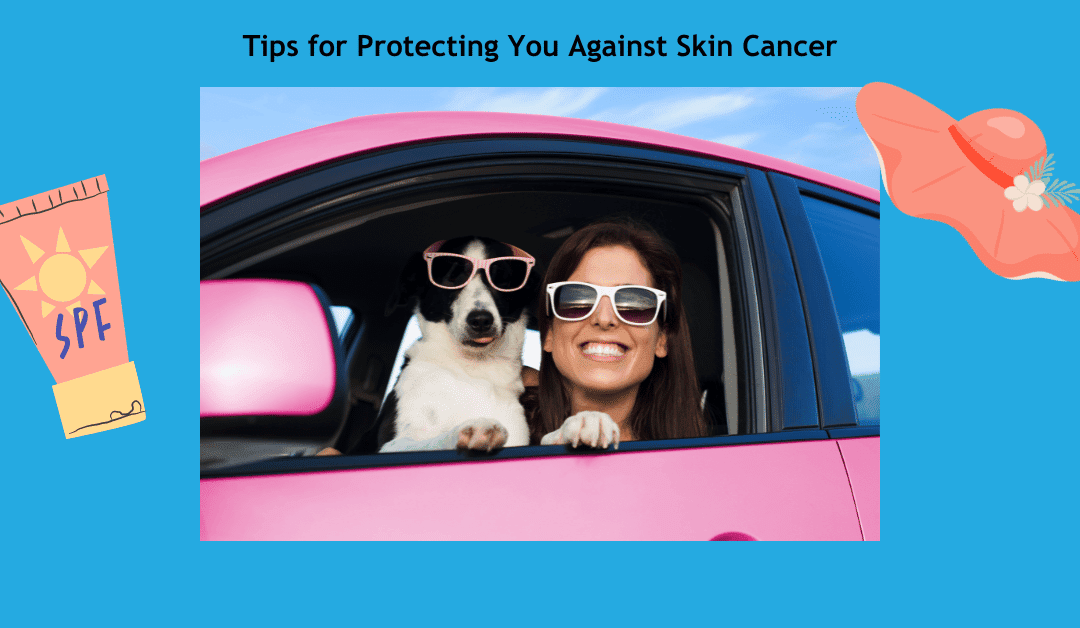
by Bag It Team | May 4, 2023 | Educational Articles
May is Skin Cancer Awareness Month
As spring gets into full swing and we all look forward to spending time outdoors, being smart about sunscreen is one of the best ways you can prevent skin cancer. To get all the protection sunscreen offers, here are a few tips to help your skin stay healthy:
- Use a broad spectrum, 30 SPF sunscreen every day of the year–even when you are nowhere near the water.
- Apply the sunscreen 15-30 minutes before you go outside so it gets absorbed and fully protects you. The sun’s rays damage your skin in as little as 15 minutes.
- Don’t use old sunscreen. Many sunscreens don’t have an expiration date but the protection will be its strongest for about three years. Tip: Write the purchase date on the bottle.
- Most people don’t use enough sunscreen. Use 1 ounce (picture a shot glass of sunscreen) to fully cover an adult body. Ears, eyelids, lips, scalps, feet and necks are the most forgotten areas that suffer sun damage.
- Sunscreen application is not a “one and done” process. Reapply the sunscreen every two hours, especially if you have been swimming or sweating.
The Centers for Disease Control also recommend that you stay in the shade, wear clothing that covers your arms and legs, a hat with a wide brim to shade your face, head, ears, and neck and sunglasses that wrap around as well as block both UVA and UVB rays.
Enjoy your summer!
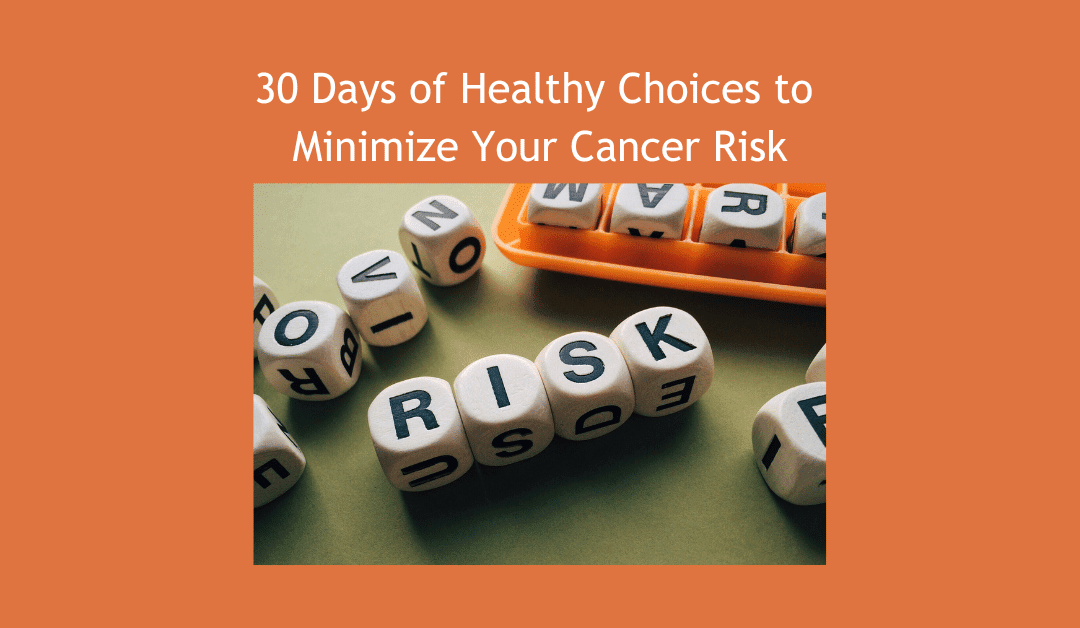
by Bag It Team | Feb 8, 2023 | Educational Articles
Some good news about cancer…
It is estimated that nearly half of cancer deaths worldwide can be prevented, according to recently published medical research. Some cancers are out of our control, but we can make choices about our habits and the way we live to reduce our risk of cancer. Here are some examples:
- Don’t use tobacco
- Protect your skin from the sun
- Eat a plant-based diet
- Limit alcohol
- Maintain a healthy weight and move, move, move
- Get vaccinated against HPV and hepatitis B
- Practice safer sex and avoid risky behaviors
- Reduce your exposure to indoor and outdoor air pollution
Finally, know your family medical history and share it with your doctors. Most people do not have a family history of cancer so getting the cancer screenings your doctors recommend for your particular situation is important. Early detection can lead to better outcomes.
The American Institute for Cancer Research offers a free 30-day checklist to help you eat well, move more and make healthy lifestyle choices to reduce your cancer risk. Find it here along with other cancer prevention resources.
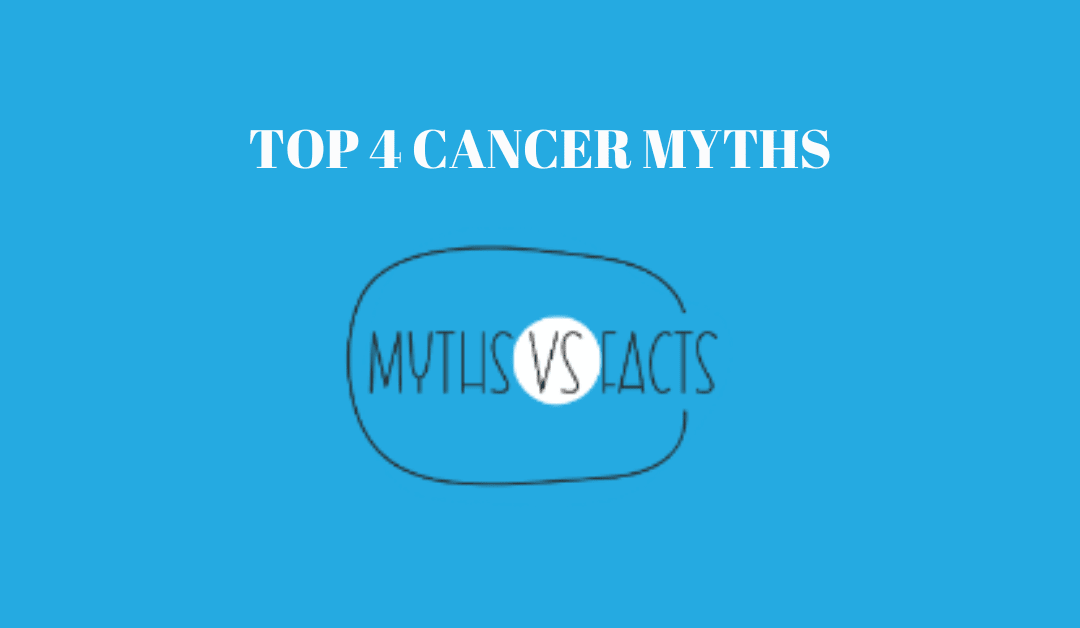
by Bag It Team | Dec 14, 2022 | Educational Articles
With all the medical advances and education for cancer, it is amazing that myths and misconceptions about cancer still abound and worry us needlessly.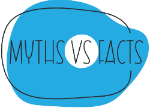
Here we debunk a few common misunderstandings around cancer. Share this information with people as you gather this holiday season. It could ease others’ cancer fears.
Fortunately, this is incorrect. According to the National Cancer Institute Office of Cancer Survivorship, as of January 2022, it is estimated that there are 18.1 million cancer survivors in the United States. This represents approximately 5.4% of the population. The number of cancer survivors is projected to increase by 24.4%, to 22.5 million, by 2032.
Advances in the prevention, screening and treatment of cancer are improving cancer survivorship tremendously.
Generally speaking, no, cancer cannot be “caught” from another person. It is also true that certain cancer-causing viruses and bacteria passed from one person to another can increase the likelihood of developing cancer. In rare circumstances involving transplantation or pregnancy, transmission has been known to occur.
While some of us are born with genes passed down from our parents that may predispose us to developing cancer at some point in our lives, only about 5-10% of cancers are due to mutations inherited from a parent. Most cancers are caused by genetic changes that occur and build up from lifestyle choices and/or exposure to chemicals and environmental factors during our lifetime.
Everything around us causes cancer.
Who hasn’t heard that using deodorant, cosmetics, hair dyes, smart phones, microwaves, sugar, artificial sweeteners, or being in close proximity to power lines all can cause cancer?
The good news: there is no consistent, conclusive scientific evidence to support these claims.
When you hear new or suspicious information about cancer, it’s a good idea to fact check by discussing it with your doctor. If you prefer to do your own online research, visit reliable cancer organization websites like these to find credible information you can trust. And, of course, there is a wealth of information on Bag It Cancer’s Resource Center.
National Cancer Institute
American Society of Clinical Oncology (ASCO)
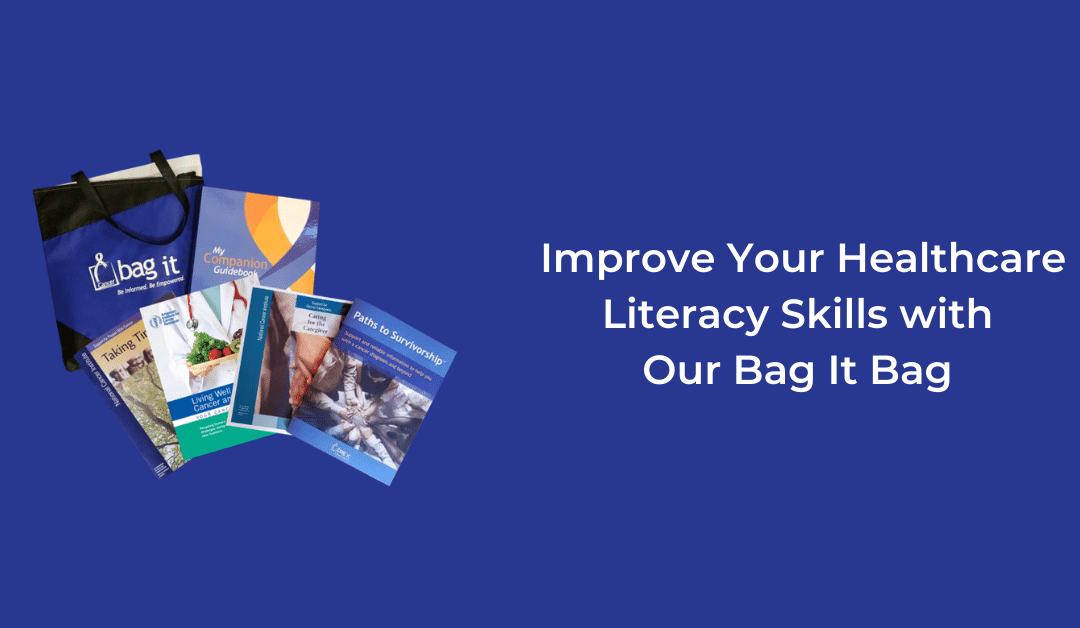
by Bag It Team | Oct 10, 2022 | Educational Articles
 October is Health Literacy Month. A study by Health & Human Services Office of the Surgeon General showed that only about 12% of Americans have proficient health literacy skills. Unfortunately, many adults lack good knowledge about their medical condition and treatment, and don’t know how to get information that is presented in a way they can understand. People report having difficulty completing medical forms and relaying important details to their doctor about their health. They may not be able to accurately read directions to take their medicines as prescribed. Each of these common situations can be linked to poor health outcomes.
October is Health Literacy Month. A study by Health & Human Services Office of the Surgeon General showed that only about 12% of Americans have proficient health literacy skills. Unfortunately, many adults lack good knowledge about their medical condition and treatment, and don’t know how to get information that is presented in a way they can understand. People report having difficulty completing medical forms and relaying important details to their doctor about their health. They may not be able to accurately read directions to take their medicines as prescribed. Each of these common situations can be linked to poor health outcomes.
Bag It Cancer is committed to expanding health literacy for all populations. Our Bag It Bag is all about making sure that anyone with cancer can find, understand and use reliable information to make decisions about their health and guide them through a complex cancer care system.
For nearly 20 years we have worked with healthcare providers who make it a practice to give Bag It Bags to their patients at diagnosis. Having a bag of printed, clear, easy to understand materials from trustworthy cancer organizations, with customizable tools to make it their own, helps people get involved in their care and feel a bit more in control.
Let’s Start with The Basics in The Bag
- My Healthcare Team. Knowing who is on your healthcare team and what their role is points you in the right direction for your questions or other assistance.
- Cancer Words. There’s a short list of definitions for common cancer words, including cancer treatments, that you may not be familiar with but need to know.
- Lists of Questions to Ask. Asking the right questions at the right time helps you to get the info you need about your care and other areas of your life affected by a cancer diagnosis.
- Making Treatment Decisions. The bag walks you through what to consider as you make decisions about your treatment and care, including sources for more information about your cancer type and life situations.
- There’s a Lot to Keep Track of…medical records, appointments, business cards, questions and notes for the doctor, and lots and lots of paperwork. My Companion Guidebook has places for everything plus checklists to simplify the steps.
- Easy Tips and Hacks to Use Like these:
- If you’re not sure you understand what is being said to you by your healthcare team, ask for it to be explained again in everyday language (and in your preferred language). Then repeat the information back to the person to make sure you got it right.
- Bring someone to your appointments to listen and write down the information, or ask permission to record the visit. This will help to ensure accuracy and saves you from trying to remember everything that is said to you. Another idea is to ask for the information to be given to you in writing (and in your preferred language) so you can read it again at home.

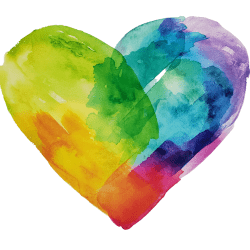
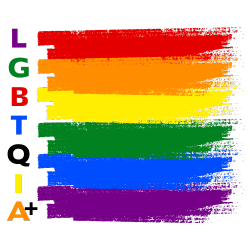
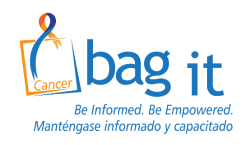



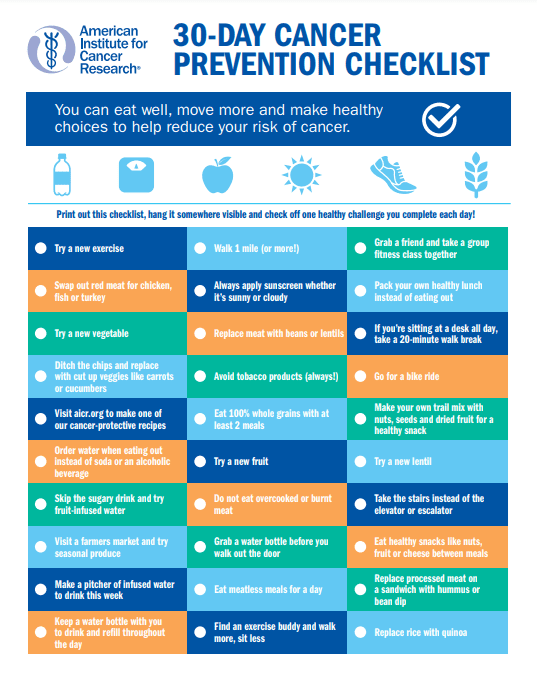







 October is Health Literacy Month. A study by Health & Human Services Office of the Surgeon General showed that only about 12% of Americans have proficient health literacy skills. Unfortunately, many adults lack good knowledge about their medical condition and treatment, and don’t know how to get information that is presented in a way they can understand. People report having difficulty completing medical forms and relaying important details to their doctor about their health. They may not be able to accurately read directions to take their medicines as prescribed. Each of these common situations can be linked to poor health outcomes.
October is Health Literacy Month. A study by Health & Human Services Office of the Surgeon General showed that only about 12% of Americans have proficient health literacy skills. Unfortunately, many adults lack good knowledge about their medical condition and treatment, and don’t know how to get information that is presented in a way they can understand. People report having difficulty completing medical forms and relaying important details to their doctor about their health. They may not be able to accurately read directions to take their medicines as prescribed. Each of these common situations can be linked to poor health outcomes.
Recent Comments